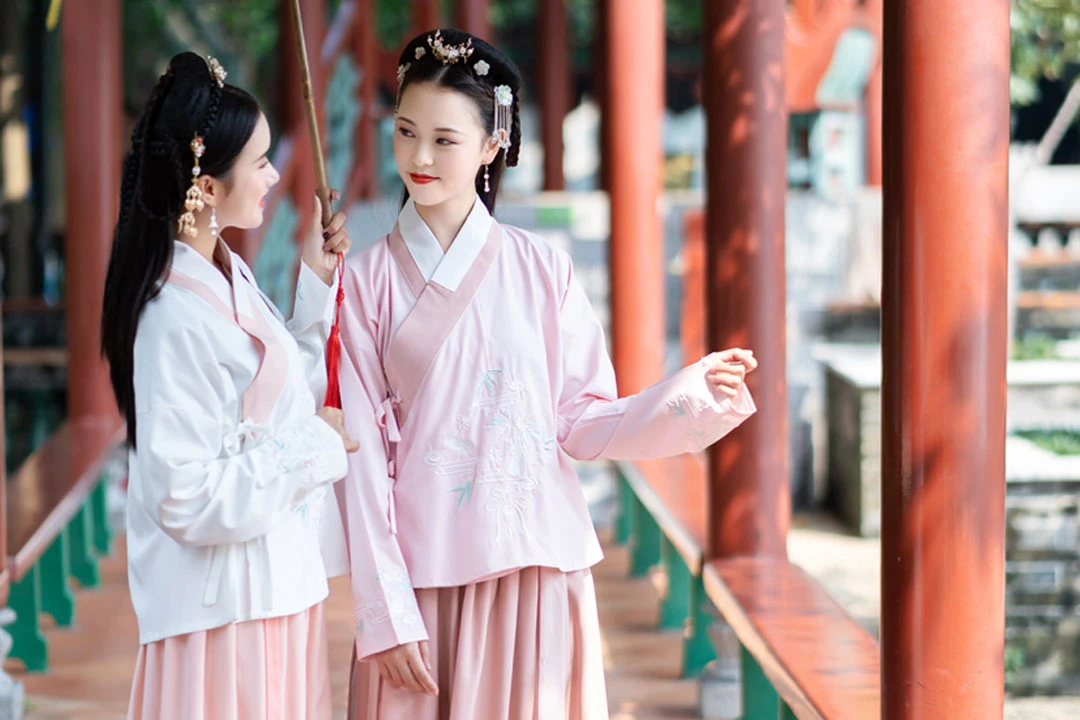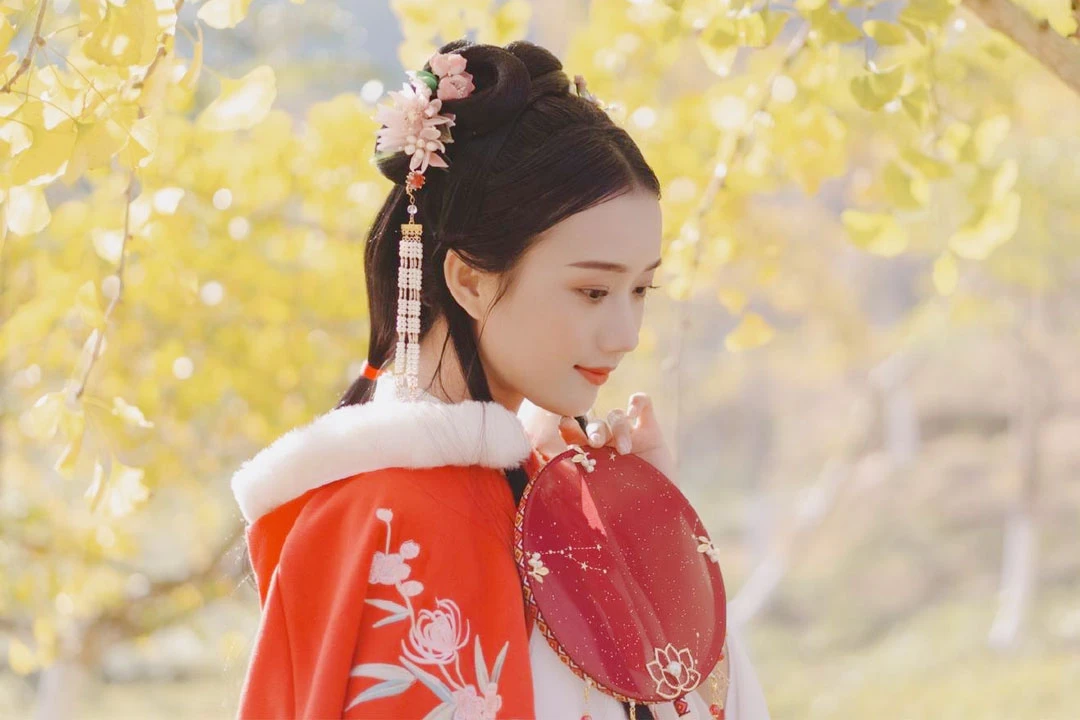The Qing Dynasty, synonymous with the grandeur of Manchu attire, hides within its historical folds a fascinating spectrum of traditional Han Chinese clothing. While the male elite’s attire, influenced by Manchu styles due to official mandates, leaned towards a uniformity of design, the realm of female Han clothing during the Qing era was marked by a remarkable diversity of styles and expressions. This deep dive into the nuanced world of Qing Dynasty hanfu, unveils a captivating interplay of tradition, innovation, and societal evolution.
Contrary to the regulated Manchu female attire, Han Chinese women of the Qing era enjoyed a liberty of choice in their daily wear, creating a kaleidoscope of styles that reflected their individuality. Categorized broadly into daily wear and ceremonial attire, the everyday ensemble of Han Chinese women was a graceful fusion of comfort and elegance.
The daily attire typically featured a variety of traditional Han hairstyles, ranging from intricate combed hair to various styles of Han hairpieces. The ensemble, comprising a short jacket, skirt, vest or cloak, and bow shoes, embraced the essence of Han fashion. The “xiaogua” or small coat, a term colloquially used for the jacket, was characterized by a large right lapel and varied in length but did not extend as far as the robes worn by the Manchu elite. The sleeveless vest and the long, open-sleeved cloak completed the ensemble, capturing the essence of everyday Han Chinese femininity.
Delving into literary works of the Qing Dynasty unveils vivid descriptions of Han Chinese women adorned in intricate hairstyles and layered garments of vibrant colors and rich fabrics. Characters in novels and poems were often depicted wearing gold accessories, showcasing the intricate details that adorned the daily lives of Han Chinese women during this period. The pages of literature offer an intimate view into the fashion intricacies that graced the lives of these women, underscoring the importance of attire as a reflection of identity and social standing.

Ceremonial attire in the Qing Dynasty was nothing short of a regal affair, embodying the essence of sophistication and tradition. Comprising the iconic phoenix crown, dragon robe, horse-face skirt, fluttering cape, and leather belt, ceremonial attire epitomized the pinnacle of Han Chinese elegance.
The phoenix crown, distinguished by its circular shape adorned with pearls and jade, was a testament to exquisite craftsmanship. The dragon robe, predominantly red with cloud patterns, featured a round collar, wide sleeves, and elaborate dragon motifs, symbolizing imperial authority and prosperity. The horse-face skirt, often green and referred to as the “official green skirt,” boasted intricate cloud dragon patterns, reinforcing the connection to celestial symbolism.
The fluttering cape, a garment worn over the dragon robe, introduced a touch of grace with deep blue or slate colors. Resembling a connected pair of long shoulder capes with square patches and tassels, the fluttering cape added an extra layer of sophistication to the ensemble. The leather belt, encircling the waist, featured various decorative elements arranged in specific patterns, symbolizing the wearer’s social standing and achievements.
The evolution of Han Chinese women’s attire throughout the Qing Dynasty mirrored the changing landscapes of societal tastes, preferences, and influences. From the more conservative styles of the Kangxi and Yongzheng eras to the opulent designs of the Qianlong period, garments underwent transformations in size, sleeve width, and ornamentation.
During the Kangxi and Yongzheng eras, the attire retained a semblance of Ming Dynasty styles, with an emphasis on modesty and simplicity. However, the Qianlong era witnessed a departure from the traditional, with garments becoming more elaborate, showcasing intricate lace borders, and multiple layers of embroidery. The late Qing period marked a significant shift from skirts to pants, reflecting a departure from earlier Han clothing traditions.
In unraveling the rich tapestry of Han Chinese women’s attire during the Qing Dynasty, we uncover more than just a display of fabrics and colors. Fashion becomes a cultural narrator, weaving a tale of resilience, adaptability, and a dynamic dialogue between tradition and innovation. The enduring elegance of Han clothing stands as a testament to the rich cultural heritage of China, showcasing how fashion has played a pivotal role in shaping and expressing societal identity through the ages.
As we conclude this exploration into the resplendent world of Han Chinese women’s attire during the Qing Dynasty, we find ourselves immersed in a timeless elegance that echoes through the corridors of history. Beyond the imposing imagery of Manchu robes, the intricate details of Han fashion unveil a story of individual expression, cultural evolution, and the enduring spirit of a civilization that has gracefully embraced change while holding onto its timeless traditions. In each stitch and embroidery, we find not just the elegance of attire but a living testament to the enduring legacy of Chinese fashion and its profound impact on the cultural narrative of a nation.

